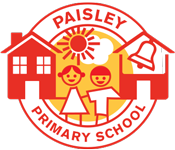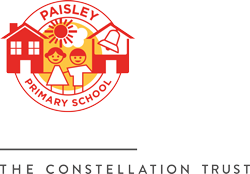

Our PE curriculum
Link – Our curriculum drivers in PE
Link – Paisley PE Curriculum Overview
Intent
Our aim is to develop the confidence and competence of each child in the PE curriculum. Our goal is for them to be passionate and confident about all aspects of PE when they finish Primary School.
Objectives of this policy
The national curriculum for physical education aims to ensure that all pupils:
- Develop competence to excel in a broad range of physical activities
- Are physically active for sustained periods of time
- Engage in competitive sports and activities
- Lead healthy, active lives.
Key Concepts:
As pupils progress through each unit of work, the following five key concepts will be explored and revisited to develop pupils’ knowledge, skills and competence in physical education:
- Competence: The selection and application of skills, tactics and compositional ideas. The readiness of body and mind to cope with physical activity.
- Movement (self): travelling, rolling balancing, sliding, jogging, running, jumping, dodging, spinning, skipping
- Movement (object control): bouncing, throwing, catching, kicking, striking
- Balance: control, stability
- Agility: changing and controlling direction and position
- Coordination: using senses together, dribbling, hand-eye co-ordination, completing movements in dance
- Speed: moving body or parts of body at controlled pace
- Tactics: strategy, plans
- Attacking and defending: 5 principles (width in attack, width in defence, depth in attack, depth in defence, delay in defence)
- Performance: Using physical competence and knowledge to gain a better understanding of physical activity.
- Technique: Skill, ability, capability, proficiency, expertise, style
- Performance: conduct, accomplishment, achievement, completion, fulfilment, implementation, execution, presenting, improving, refining
- Spatial awareness: awareness, understanding of self and objects within a space, changes in position
- Physical literacy: performing with confidence, performing actions accurately
- Rules: regulation, directions, commands, guidelines, safety, referee, decision making
- Creativity: Exploring and experimenting with techniques, tactics and compositional ideas to produce efficient and effective outcomes.
- Applying tactics: strategy, games, planning, sequencing, creating
- Competition: rivalry, contesting, opposition, match, game, round, heat, event
- Co-operation: collaboration, working together, combined effort, teamwork, partnership, coordination
- Communication: instructions, discussion, interaction, encouragement, clarity
- Healthy, active lifestyles: Understanding the positive contribution that regular, fit for purpose physical activity makes to the physical and mental health of the individual in preparation for their future lives
- Safety: Ourselves, others, dangers, risks, long term effects of exercise, keeping heathy, rescue, confidence, limitations, rules
- Health and fitness: mental, physical and social well-being, types of exercise (aerobic, circuit, yoga/Pilates)
- Evaluation and analysis: Comparing performance with previous ones and those of others to demonstrate improvement to achieve their personal best
- Evaluation: assessment, appraisal, judgement, analysis, improving
- Determination: self-improvement, resilience, personal best
Aims of PE Teaching
In PE, by the end of EYFS children will:
Children know the importance for good health of physical exercise, and a healthy diet, and talk about ways to keep healthy and safe. This is implemented in the indoor classroom with activities from the physical box and through dance and movement sessions. They manage their own basic hygiene and personal needs successfully, including dressing and going to the toilet independently. Children show good control and co-ordination in large and small movements’ move confidently in a range of ways, safely negotiating space with plenty of opportunities to develop these skills in the outside environment and wildlife area. They handle equipment and tools effectively, including pencils for writing.
By the end of Key Stage 1 children will:
Pupils should develop fundamental movement skills, become increasingly competent and confident and access a broad range of opportunities to extend their agility, balance and coordination, individually and with others. They should be able to engage in competitive (both against self and against others) and co-operative physical activities, in a range of increasingly challenging situations.
Pupils should be taught to:
- master basic movements including running, jumping, throwing and catching, as well as developing balance, agility and co-ordination, and begin to apply these in a range of activities
- participate in team games, developing simple tactics for attacking and defending
- perform dances using simple movement patterns.
By the end of Key Stage 2 children will:
Pupils should continue to apply and develop a broader range of skills, learning how to use them in different ways and to link them to make actions and sequences of movement. They should enjoy communicating, collaborating and competing with each other. They should develop an understanding of how to improve in different physical activities and sports and learn how to evaluate and recognise their own success.
Pupils should be taught to:
- Use running, jumping, throwing and catching in isolation and in combination.
- Play competitive games, modified where appropriate [for example, badminton, basketball, cricket, football, hockey, netball, rounder’s and tennis], and apply basic principles suitable for attacking and defending.
- Develop flexibility, strength, technique, control and balance [for example, through athletics and gymnastics].
- Perform dances using a range of movement patterns.
- Take part in outdoor and adventurous activity challenges both individually and within a team.
- Compare their performances with previous ones and demonstrate improvement to achieve their personal best.
Swimming and water safety
All schools must provide swimming instruction either in key stage 1 or key stage 2.
In particular, pupils should be taught to:
- swim competently, confidently and proficiently over a distance of at least 25 metres
- use a range of strokes effectively [for example, front crawl, backstroke and breaststroke]
- perform safe self-rescue in different water-based situations.
Implementation
In PE, by building on progressive skills such as balance, coordination and team games throughout the school from EYFS to the end of Year 6 ensures a balanced range of skills covering a broad range of sports. Teachers plan their lessons using Get Set for PE scheme of work. Lesson objectives are clear and sequenced so that outcomes are secure and meaningful. In PE children do not learn objectives in isolation but continue to embed these through carefully planned application of skills in pair and group work throughout the year which has a direct impact on teamwork and evaluating their own progress and others.
All children have access to the PE curriculum with lessons being tailored appropriately for individual children with SEND. Children will be supported and learn through similar activities, with final outcomes modified to suit all needs.
Cross-curricular
Wherever possible, links are made between PE and other curriculum areas.
This deepens children’s understanding by providing opportunities to reinforce and enhance learning.
For example:
PE contributes to the teaching of personal, social and health education and citizenship. Children learn about the benefits of exercise and healthy eating, and how to make informed choices about these things.
PE contributes to the teaching of science. Children learn about the physiological effects of exercise.
PE offers opportunities to support the social development of our children through the way we expect them to work with each other in lessons.
Working in pairs, groups and teams gives children the chance to discuss their ideas and performance. Their work in general enables them to develop a respect for other children’s levels of ability, and encourages them to co-operate across a range of activities and experiences.
Planning in PE
Planning in PE is based on the National Curriculum, adapted to reflect the needs of the children at Appleton Primary School. We have a whole school approach to PE through GET Set for PE which is implemented from EYFS to the end of Year 6.
As required in Key Stage 1, we teach dance, games and gymnastics, plus other activities:
In Key Stage 2 we teach compulsory Dance, games and gymnastics, plus many other activities: swimming and water safety, athletics and outdoor and adventurous activities.
Planning is a process in which all teachers are involved.
It includes:
- Schemes of work for PE;
- Allocated staff meeting time to discuss the PE curriculum so that consistency of approach and standards can be achieved;
- Medium and short term plans which outline specific learning objectives, assessment opportunities and differentiation, and which build upon the prior learning of the children;
- Adaptations to medium and short term plans to reflect a particular school focus, such as a theme week; The use of ICT to support the planning process.
Inclusion
In order to ensure equality of opportunity we:
- Take account of the interests of boys and girls by using a range of activities and games;
- Avoid gender stereotyping;
- Enable the fullest possible participation of pupils with disabilities or particular medical needs, offering positive role models and making provision, where necessary, to facilitate access to activities with appropriate support, aids or adaptations;
- Differentiate the curriculum to take account of the needs of pupils with Special Educational Needs and Gifted and Talented pupils;
- Identify and maintain a register of Gifted and Talented pupils in PE.
Assessment, Recording and Reporting
Assessment in PE takes place informally, during lessons, through discussions and observation. Opportunities for assessment are identified in medium term planning. Pupils who are Gifted and Talented in PE are identified. Assessments focus on the key skills taught and are passed to the next teacher. A pupil’s achievement in PE is reported to parents at parents’ evenings and through the annual written report.
- Informal monitoring through discussion with class teachers and observations.
- There is a planned timetable of subject monitoring at Appleton.
- Photographs taken for evidence from EYFS-Year 6.
It is the teacher’s responsibility to collect the resources before a lesson, and to put them back in the right place after the lesson. The hall contains a range of large apparatus (Gymnastics), and other equipment that is generally used for PE in the hall.
We expect the children to help set up and put away this equipment as part of their work. By so doing, the children learn to handle equipment safely. Teachers should make use of the school playground and fields for games and athletic activities.
The PE coordinator maintains a list of resources, which is shared with staff.
The coordinator is responsible for the ordering of equipment and the management of the PE budget.
Resources are checked regularly and replaced as needed by the P.E co-ordinator. Apparatus is checked once a year. Staff should report any damage or faults to the P.E co-ordinator or Head teacher.
Impact
The impact of learning in PE is measured through building on key skills from EYFS to the end of Key Stage 2. Developing skills in team games from a young age has a direct impact on competitive competitions within year groups and then into extra-curricular sports between schools.
Further information
